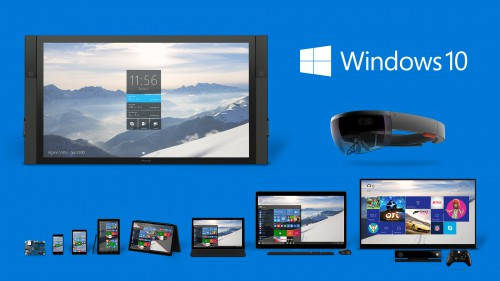| Windows 10 - Get Ready For Summer Launch |
| Written by Mike James |
| Wednesday, 18 March 2015 |
|
Although it might seem unlikely from the current state of the Windows 10 Technical Preview, the launch is set for the summer. Do we need to get ready? Terry Myerson, Microsoft executive vice president of the Operating Systems group, announced at the Windows Hardware Engineering Community (WinHEC) summit in China that Windows 10 will launch this summer in 190 countries and 111 languages around the world.
Of course "summer" isn't a very precise date, but it is better than "sometime this year" which is the estimate we had before. If you want to get algorithmic about it, summer in the Northern Hemisphere starts on June 21 and ends on September 22. The current state of the Technical Preview suggests that there is still a way to go before stability is reached and this makes the best guess for a launch September. This is still earlier than most people would have guessed with the end of December, or even rolling over into next year, seeming likely. Why does this matter? Windows 8 introduced a new type of application based on WinRT, but because it didn't really catch on there isn't much sense in developing WinRT apps. The same is true of Windows Phone apps. With the release of Windows 10, this might be about to change. The first reason is that Microsoft is planning to give Windows 10 away to current users of Windows 8 and, more importantly, to current users of Windows 7. Given that Windows 10 has fixed many of the problems with Windows 8 it is likely that the migration to Windows 10 will be rapid - and this will create a market for WinRT apps. Microsoft also seems to be packing in the technical sweeties to encourage users to upgrade.
Also announced at WinHEC was news that Lenovo, Tencent and Qihu 360 will be encouraging their customers to move to Windows 10 by supporting the upgrade - which is potentially more than 1000 million users. What does this mean for app development? In Windows 8 WinRT apps could not run on the desktop and this created a big split between the two application types. In Windows 10 WinRT apps can run on the desktop in a window and this makes them much more attractive. Of course, WinRT is a young and immature API and it doesn't have the layers of features that the full desktop does - this is both an advantage and a disadvantage. If Microsoft manages to make Windows Phone compatible with Windows 10 then we have another possible market as WinRT apps will be easy to move to Windows Phone 10. There is, of course the problem that not many users have Windows Phones. There are, however, signs that Microsoft might be a bit more successful in the future. The first is that low cost Lumia phones do seem to have made a small impact on the market and promises of better integration with both the desktop and Azure might make the phone even more attractive for business use. Also announced was the ability for Xiaomi Mi 4 users, a "select group", to download Windows 10 Technical preview to try it out. Lenovo has also announced that it will produce a Windows Phone later this year. No news on whether this will be a Windows 10 phone, but the fact that any manufacturer is willing to risk new hardware is interesting. Windows 10 is also trying to make an impact on the IoT world by giving away a cut down version for a range of popular development boards - Raspberry Pi, Intel Edison/Galileo, and Qualcomm boards. This is one area where it is likely to be more difficult to get any big change in the way people work. After all, what is wrong with Linux and Python or C for IoT? If you would like to see Microsoft's slightly glowing view of its current IoT position view the following "polished" video:
The bottom line is that it might be time to look at creating WinRT apps for the desktop if the format suits the purpose. However, there are two worrying facts about WinRT development. They might not be bad enough to put you off, but are worth keeping in mind. The first is that to create any WinRT program you need to have a developer account with Microsoft. At the moment this is just a formality, but it is clear that Microsoft could change the rules at any time. The second is that there is still no easy way to "sideload" WinRT apps and if you are planning to create a LOB app for a company you need to look into distribution. Both points are also negatives for the weekend "coding for fun and profit" programmer, traditionally so important to Microsoft's eco system. Yes Windows 10 might well come with the closing days of summer, but we still have some unstable conditions to deal with in the Windows development world. Overall, though, Microsoft seems to be doing the right things. More InformationWindows 10 Launching This Summer in 190 Countries and 111 Languages Related ArticlesWindows 10 Cannot Fail - It's Free Microsoft Planning A New Browser Windows XP Loses Share Windows 8.1 Gains Developers - Microsoft Is Back! Windows 8 Doing Badly, Windows 7 Gets Extension Microsoft Reveals "Universal" Apps Windows 8 Users Hardly Use Any Modern Apps How Microsoft Could Have Done Metro
To be informed about new articles on I Programmer, install the I Programmer Toolbar, subscribe to the RSS feed, follow us on, Twitter, Facebook, Google+ or Linkedin, or sign up for our weekly newsletter.
Comments
or email your comment to: comments@i-programmer.info |
| Last Updated ( Wednesday, 18 March 2015 ) |



